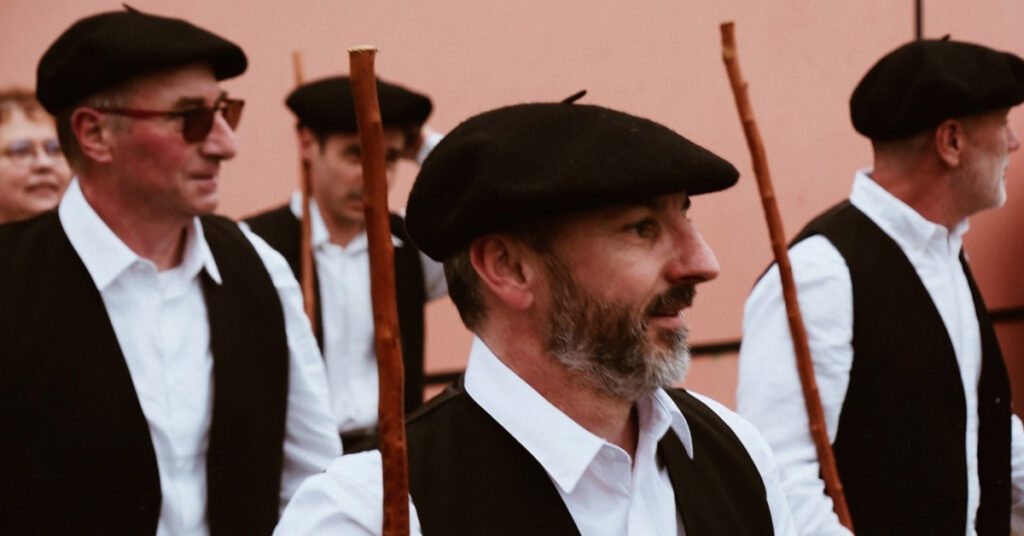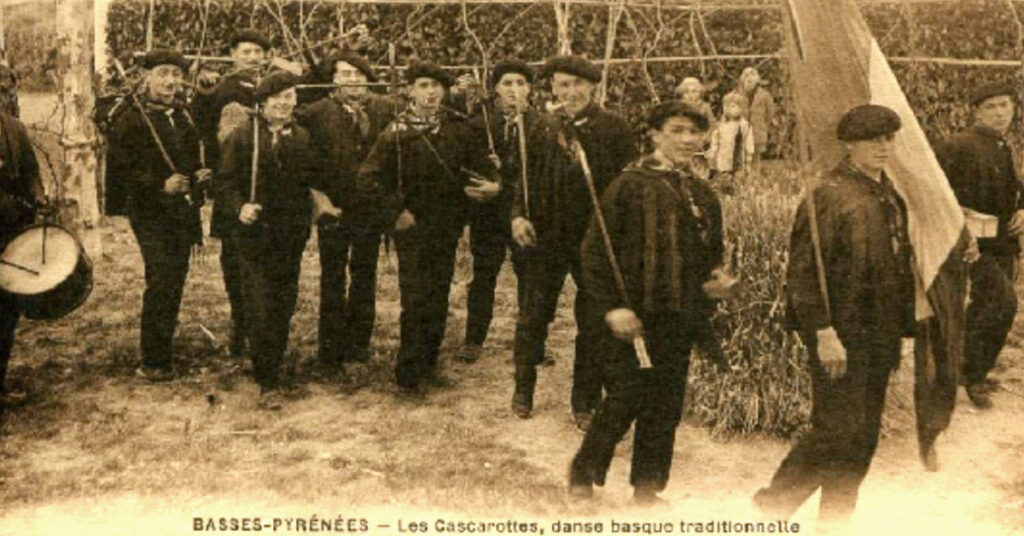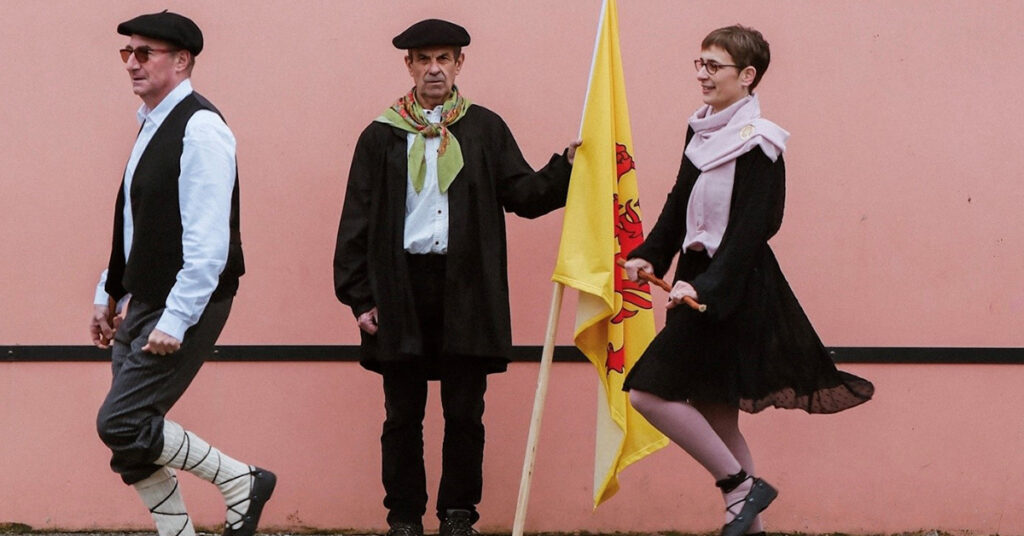Basque ethnography at a glance
Innovation could be said to have come tradition at the Hartzaro festival in Uztaritze. The local residents have chosen carnival time to hold the annual festival for the last 28 years. Even though the Pyrenean bear did not hibernate last winter, the festival has celebrated its awakening in fine style.
The streets of Uztaritze and its neighbourhoods are alive with cultural activities during the first half of February. In Uztaritze, flesh and spirit have clashed during carnival time, right from the start of its festival. Year after year, the residents of Uztaritze have created characters; inventing, adapting or reviving dances. And they have done so this year, for the twenty-eighth time.
Ganixa, a character that was well-known in the Heraitze neighbourhood eighty years ago, was brought back to life for the day of the Cascarots.
More than a character from Uztaritze, Ganixa was an old Cascarot from the Heraitze neighbourhood, who begged from house to house. That character had disappeared a long time ago, but the Itsasu researcher Xabier Itzaina at some time informed the residents of Uztaritze of his existence.
We do not know if such characters sang or danced as they begged for alms… They were dancers in the only images found in the short film made by Jean-Baptiste Hiribarren in 1927. Could the name Ganixa be related to the main character of Atheka-gaitzeko oihartzunak, the book written by the lawyer Jean-Baptiste Dasconaguerre in 1870? Who knows!
That short film, the odd reference and a post card are the only traces found by the people of Uztaritze.
And they have used the little that is known to recreate the character in 2024. They do not even know if it was long-established tradition or an ad hoc group that performed for a short time. According to the images, they were usually older rather than younger Cascarots who took part. Even though only young men took part back in the day, the tradition has been revived with mixed couples, who have awakened the tradition of this character from a long 80-year slumber.
What did the Ganixak dance at that time? Nobody knows. As they were shown holding makilas or walking sticks, the residents of Uztaritze have created dances featuring the sticks. José Casaubon, the dancer from Labourd, helped them with the choreography. In turn, based on the writings of the Breton researcher Jean-Michel Guilcher, they have revived a dance based on the soka dantza, where the dancers held makilas instead of handkerchiefs between each other. They also used Guilcher’s meticulous description of the masquerade in an article from 1946. The Ganixak also performed the Marmutx and Sinple dances.
The revived Ganixak, dressed in black and white – and leaving aside the jackets of that time – danced and asked for alms through the Heraitze neighbourhood, in their endeavour for the character of the past to become a tradition of the present.
Pantxix Bidart Pla




